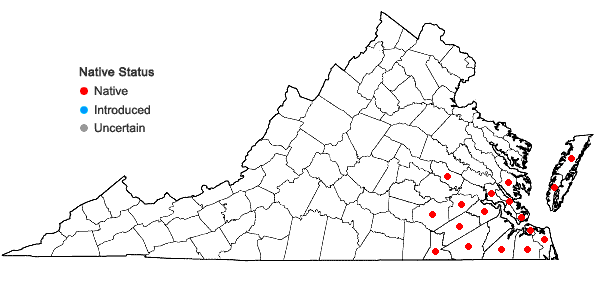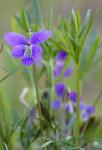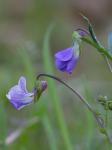Viola brittoniana Pollard

Detail
- Family
- Violaceae
- Botanical Name
- Viola brittoniana Pollard
- Common Name
- Coast Violet, Northern Coast Violet
- Synonym(s)
- Viola pedatifida G. Don ssp. brittoniana (Pollard) McKinney
- Flora of Virginia Name/Status
- Viola brittoniana Pollard
- Comments
- Viola brittoniana was described originally as a succulent, glabrous plant with a fondness for saline soils, i.e. “essentially maritime.” It was described from the northeastern coast, but Pollard considered his new species to range the entire length of the Atlantic seaboard. At the time he described the species, he “often had misgivings as to whether it might not, after all, be the true septemloba of Le Conte”, but went on to mention the latter as having larger flowers and a different cut to the leaves. Leconte described his plant from sandy pinelands of Carolina and Georgia. It’s no wonder confusion persists to this day! Leconte’s name has since been applied much more widely, but only sparingly to Virginia, doubtlessly because of our state’s position in the northeastern region. If the two taxa are considered the same, the name Viola septemloba has priority. If one considers them distinct, critical re-evaluation of herbarium specimens will be needed to elucidate their proper ranges. Occupying the same region, but differing in its habitat (floodplain forests), is Viola edulis, which should also be included in any assessment of cut-leaved violets of our Coastal Plain.
Some authorities have also treated Viola pectinata E.P. Bickn. as V. brittoniana var. pectinata (Bickn.) Alexander, but that taxon seems distinct in its elongated triangular leaves having especially deep crenations near the base (vs. deeply cut-lobed in V. brittoniana). We follow Ballard et al. (2023, Jour. Torrey Bot. Soc. 150(1): 3-266) in recognizing V. pectinata as a separate species. - Habitat
- As currently interpreted, bogs, sphagnous seeps, boggy clearings, and open peaty swamps; occasionally in drier habitats. Infrequent in the Coastal Plain, north to Accomack, Dinwiddie, and Gloucester counties. The map may include records for Viola brittoniana, V. septemloba, and V. pectinata. Systematic study is badly needed.
- Native Status
- Native
To save this map, right-click (control-click for Mac users) on the map and choose "Save Image As...".

